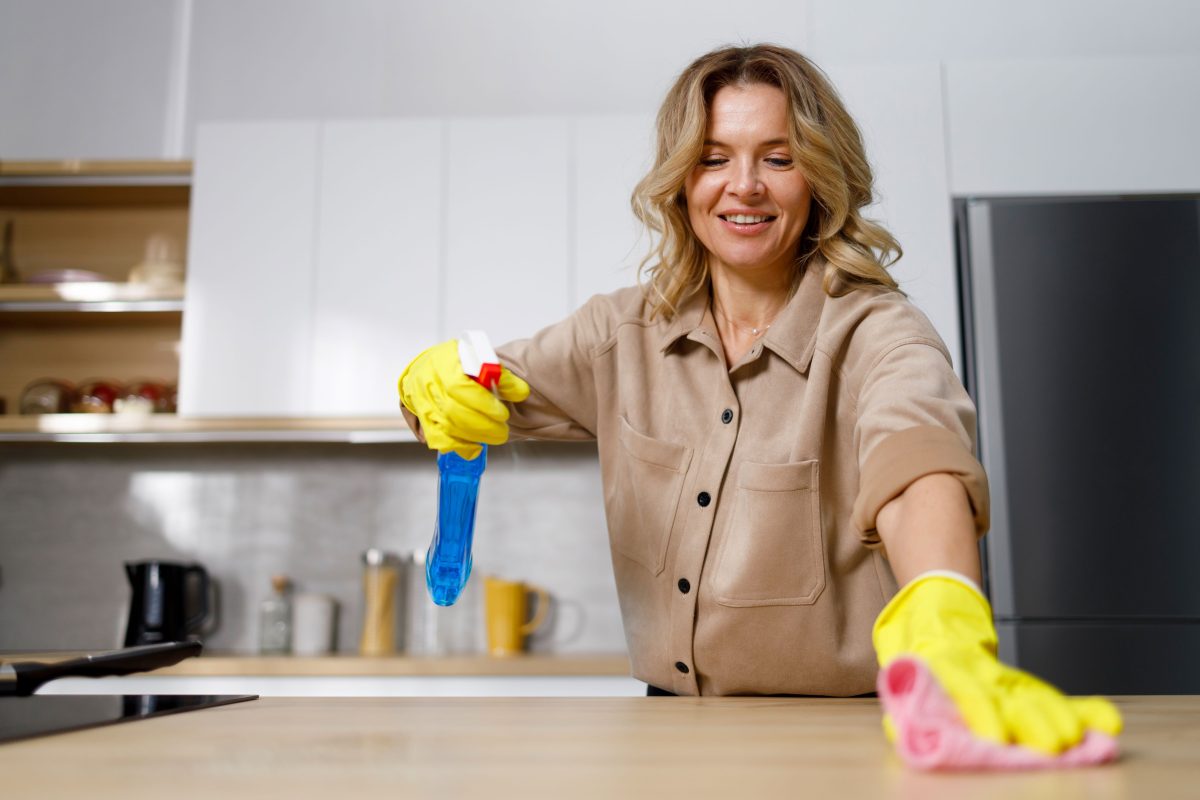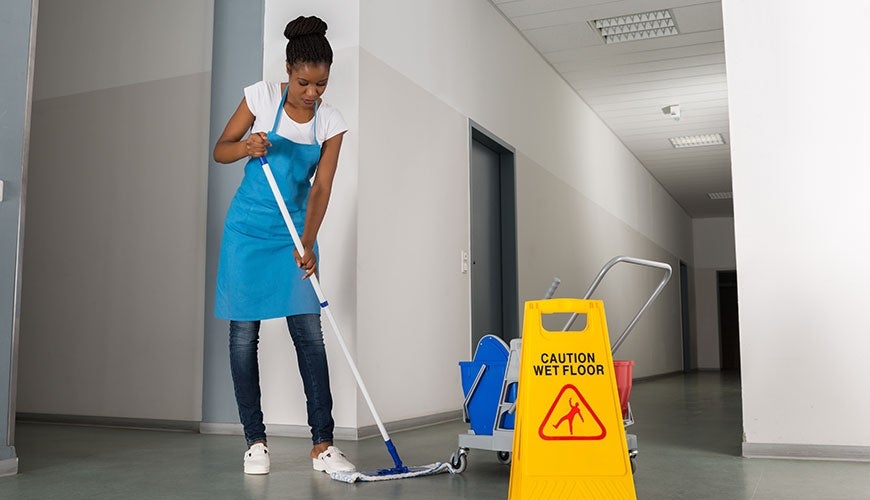The Most Effective Everyday Cleaning Practices: Scrub the Surfaces, Vacuum Carpets, and Keep Clutter away
The Most Effective Everyday Cleaning Practices: Scrub the Surfaces, Vacuum Carpets, and Keep Clutter away
Blog Article
Comprehending the Requirement for Extensively Sanitizing and Sanitizing Frequently Touched Surfaces in High-Traffic Areas
In the world of public health and safety and security, the precise sanitation and sanitization of regularly touched surface areas in high-traffic areas stand as critical measures in stopping the spread of dangerous microorganisms. By checking out the different facets of surface sanitation, from the risks associated with disregarding cleansing methods to the efficient techniques that can be utilized, a more clear understanding emerges of the essential duty these practices play in securing public health.
Value of Surface Area Disinfection
Stressing the comprehensive disinfection of high-traffic surface areas is critical in maintaining a hygienic atmosphere and stopping the spread of hazardous pathogens. High-touch surface areas such as door deals with, light buttons, elevator buttons, and kitchen counters act as reproducing premises for infections and bacteria. Routine disinfection of these surfaces is critical to minimize the danger of contamination and transmission of ailments.
By applying a durable sanitation protocol, businesses and establishments can develop a safer setting for staff members, site visitors, and consumers. Correct surface area sanitation not just alleviates the spread of infectious diseases yet likewise imparts self-confidence in the tidiness and safety of the facilities. This proactive approach shows a dedication to health and wellness, which is especially vital in high-traffic locations where the likelihood of exposure to microorganisms is increased.
In addition, surface disinfection plays a vital duty in overall infection control techniques. Integrated with hand hygiene methods, using masks, and preserving physical distancing, detailed disinfection of high-touch surface areas creates a comprehensive defense versus the transmission of hazardous microorganisms. Prioritizing surface area disinfection is a necessary part of an all natural strategy to health and wellness in common rooms.
Threats of Disregarding Cleansing Practices
Ignoring complete sanitation of high-traffic surfaces considerably heightens the threat of viral and microbial contamination, positioning a major risk to the health and wellness of people frequenting these spaces. Failing to carry out appropriate cleaning techniques can cause the build-up and spread of harmful pathogens, consisting of germs and viruses, on frequently touched surface areas such as doorknobs, handrails, elevator switches, and counter tops.

Additionally, disregarding the relevance of detailed cleansing not only endangers the wellness of people however also weakens efforts to keep a hygienic and tidy environment. It is critical to acknowledge the value of appropriate sanitation procedures in preventing the spread of infections and securing public health.
Efficient Disinfection Techniques
To maintain ideal sanitation and decrease the threat of contamination on high-traffic surfaces, using effective sanitation methods is crucial. One of one of the most common and reliable sanitation methods is utilizing chemical anti-bacterials. These products can vary in stamina and make-up, with some targeting particular microorganisms like viruses or microorganisms. It is essential to comply with the supplier's instructions for appropriate dilution, call time, and ventilation when using chemical anti-bacterials to guarantee their performance - Everyday cleaning.
One more efficient method is making use of UV-C light. UV-C light has been shown to be effective in killing a large variety of bacteria by interrupting their DNA framework, therefore avoiding them from reproducing. Nevertheless, it is necessary to make use of UV-C light appropriately, making certain that the proper strength and direct exposure time are related to accomplish the desired disinfection outcomes.
In addition, using steam cleansing as a sanitation method can be very efficient, particularly on surface areas that are heat-resistant. Heavy steam can penetrate permeable surfaces and kill microorganisms, viruses, and various other microorganisms effectively. When making use of steam cleansing, it is very important to make certain that the surface reaches the needed temperature for an adequate quantity of time to ensure correct disinfection.
Influence on Public Health
The upkeep of high standards of tidiness and sanitation on high-traffic surfaces plays a vital role in securing public health. Often touched surface areas in locations with high footfall, such as doorknobs, hand rails, lift buttons, and washroom centers, act as breeding grounds for unsafe pathogens. Stopping working to properly sanitize these surface areas can lead to the fast spread of contagious conditions within communities. By executing extensive disinfection procedures, the danger of transmission of infections, microorganisms, and various other germs can be significantly lowered.
In high-traffic locations like flight terminals, institutions, medical facilities, and public transport systems, the influence of extensive disinfection procedures can not be downplayed. Prioritizing the sanitization of often touched surfaces is an aggressive approach to advertising public health and wellness and boosting the security of people in shared areas.
Carrying Out Regular Cleansing Procedures
Without delay instituting and sticking to a constant timetable of cleaning methods is critical for keeping the cleanliness and security of high-traffic surfaces. Routine cleansing protocols are crucial in stopping the buildup of germs and virus on frequently touched surface areas, especially in locations with high foot traffic. By applying an organized method to cleansing, companies can efficiently minimize the risk of illness transmission and create a healthier setting for employees, consumers, and the public.
To develop an effective cleaning routine, it is critical to identify high-traffic areas that call for constant attention. These locations might include doorknobs, handrails, lift switches, restroom facilities, and common tools. Implementing a routine cleansing routine that targets these surface areas numerous times a day can significantly decrease the spread of unsafe bacteria and infections.
Additionally, making use of suitable cleaner and disinfectants is crucial to ensuring that surfaces are thoroughly disinfected. Normal training of cleansing team on correct cleansing strategies and the importance of adherence to the cleaning schedule is also important in preserving a hygienic atmosphere. By prioritizing constant cleaning procedures, organizations can promote the wellness and health of people who engage with these high-traffic surfaces.

Conclusion
In verdict, it is why not check here critical to focus on complete disinfection and sanitization of frequently touched surface areas in high-traffic areas to avoid the spread of hazardous virus and preserve public health and wellness. It is important to recognize the value of preserving clean surface areas in high-traffic areas to ensure the wellness of the community.
In the world of public health and wellness and safety, the thorough disinfection and sanitization of regularly touched surfaces in high-traffic locations stand as vital measures in protecting against the spread of dangerous pathogens. By discovering the different elements of surface sanitation, from the dangers linked with ignoring cleansing procedures to the reliable techniques that can be learn the facts here now used, a clearer understanding arises of the vital function these techniques play in protecting public wellness.Additionally, using vapor cleansing as a disinfection technique can be very effective, particularly on surface areas that are heat-resistant. When using heavy steam cleansing, it is important to make sure that the surface area reaches the needed temperature level for a sufficient amount of time to ensure correct disinfection.
In conclusion, it is vital to focus on comprehensive sanitation and sanitization of regularly touched surface areas in high-traffic areas to avoid the spread of dangerous virus and visite site maintain public health.
Report this page